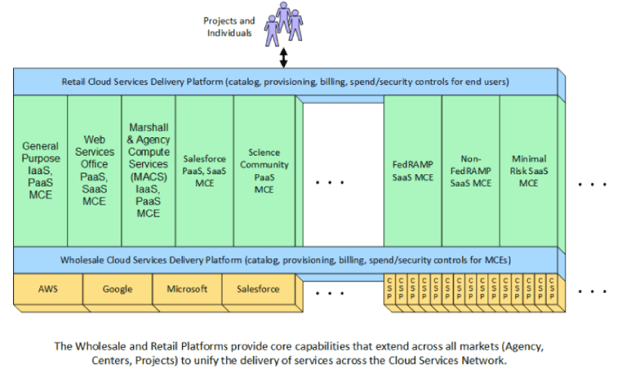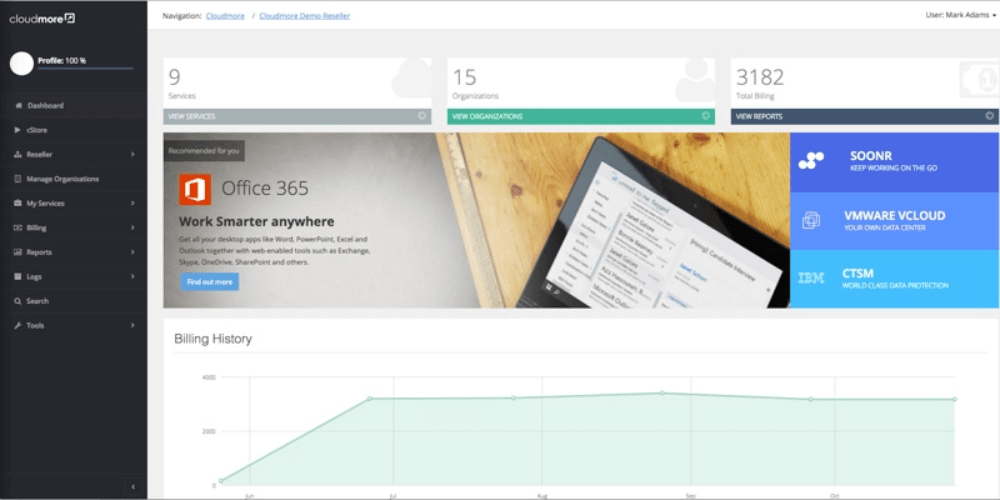How Enhanced IT Procurement is Saving Organizations Millions
“All cloud use at NASA shall be MANAGED cloud use,” wrote the space agency’s chief technology officer, Ray O’Brien in mantra-like fashion back in 2016.
By this point NASA had saved over US$103 million in software after implementing a new asset management program to harness its profligate use in 2011.
Runaway cloud spending is a huge challenge across industries globally, especially as the demand for web-based applications and services accelerates. Each computer in every office worldwide has around US$259 of unwanted, unnecessary or unused applications. This figure gets compounded if you multiply it across larger organizations.
There are so many easy and fast ways to acquire IT services that it is becoming increasingly difficult to measure and optimize. Not only are disparate business units downloading software on demand – individual employees are too – on their laptops, phones, tablets, and even on wearable devices. The added disadvantage being that companies are exposed to a higher security risk. Sensitive business data could be… anywhere.
A lack of central monitoring and control also means that crucial information is being left in data silos across organizations. And, without a clear view of what’s being used and what’s needed, it’s very hard for IT to negotiate software upgrades and service-level agreements.
The financial losses can be staggering. Poor IT procurement led the State of Oregon in the US to overspend by as much as US$1.6 billion between 2015 and 2017. Over-dependency on legacy processes and systems, paired with a lack of oversight and knowledge of historical spend were among the root causes of this calamity. The auditors reviewing the case promptly and firmly advised the Oregon office to invest in an electronic procurement system that would "provide purchase data of sufficient detail to allow for robust spending analysis."
The Challenge of Meeting Business Unit Demands
There is a fine balance to be struck between meeting the demands of individual business units and subsuming all IT control and oversight under one central management.
Without central management, different business units devise their own sets of policies, processes and implementations. There are thousands of different products for infrastructure-as-a-service, software-as-a-service and for other APIs and third-party services that they can choose from. It can get very complex and very dynamic. Software is purchased, often in duplicate, and too often without prior assessment of the security posture and risks. This is a highly inefficient practice that leaves central IT with their hands tied. They can’t leverage their buying power and they can’t reign in cloud sprawl to keep their organization cyber-secure.
But business units also want to preserve their flexibility to innovate. Business projects are fluid, with different evolving requirements that can be met by newer and better software and systems. The best cloud applications make teams more effective, cut costs and drive efficiency. The question is how to reconcile the changing requirements of different teams by delivering a democratic process and a system that eliminates unsanctioned services and rampant cloud sprawl.
A Unified Approach to Delivering Software
“Explosive growth in SaaS usage cannot be managed using manual processes,” wrote NASA’s O’Brien in his 2016 report. Instead, he proposed a tiered services architecture to be delivered through a specialized asset management platform – “a unified approach for delivering IT services.”
NASA employees now leverage their buying power in an online marketplace where a medley of sanctioned products and services are delivered with the help of internal service providers who evaluate, onboard and curate software for NASA-wide use. Purchases can be approved or rejected, and visibility of all center activity is accessible from the top layer, the Office of the Chief Information Officer.

Source: O’Brien. R., Office of the Chief Information Officer, NASA, ‘Enabling NASA Software-as-a-Service (SaaS) Use’ (accessed 18 February 2019)
The best enterprise management platforms handle the full customer life-cycle seamlessly; from storefront viewing through to provisioning, to spend and security controls, to billing. Role-based permissions give different teams layered access, oversight and control over what’s happening across the organization. Importantly, all transactions are recorded and neatly segmented and stored for reporting. This allows auditors and finance teams to monitor and track transactions and software usage on a global, business unit or even individual basis, diminishing the risk of poor IT procurement and crises such as Oregon’s.
Cloudmore
Delivered as a SaaS service, the Cloudmore enterprise management platform tightly integrates your services, hardware and licensing to simplify and accelerate the deployment of cloud applications.
We support your hybrid IT strategy to deliver a mix of public, private and internal, IaaS, PaaS and SaaS services.
Cloudmore works seamlessly with your existing systems and IT partners, adding a single viewing pane for administrators, managers and users to discover, provision and consume services.
You don’t have to be NASA to benefit from first-rate cloud management. We make sure to offer organizations of every size the same benefits at a fee that promotes a rapid return on investment.
Find out more
Share this
You May Also Like
These Related Stories

Shadow IT: It's Time to Reign in the Rogues

Cloud Everywhere


